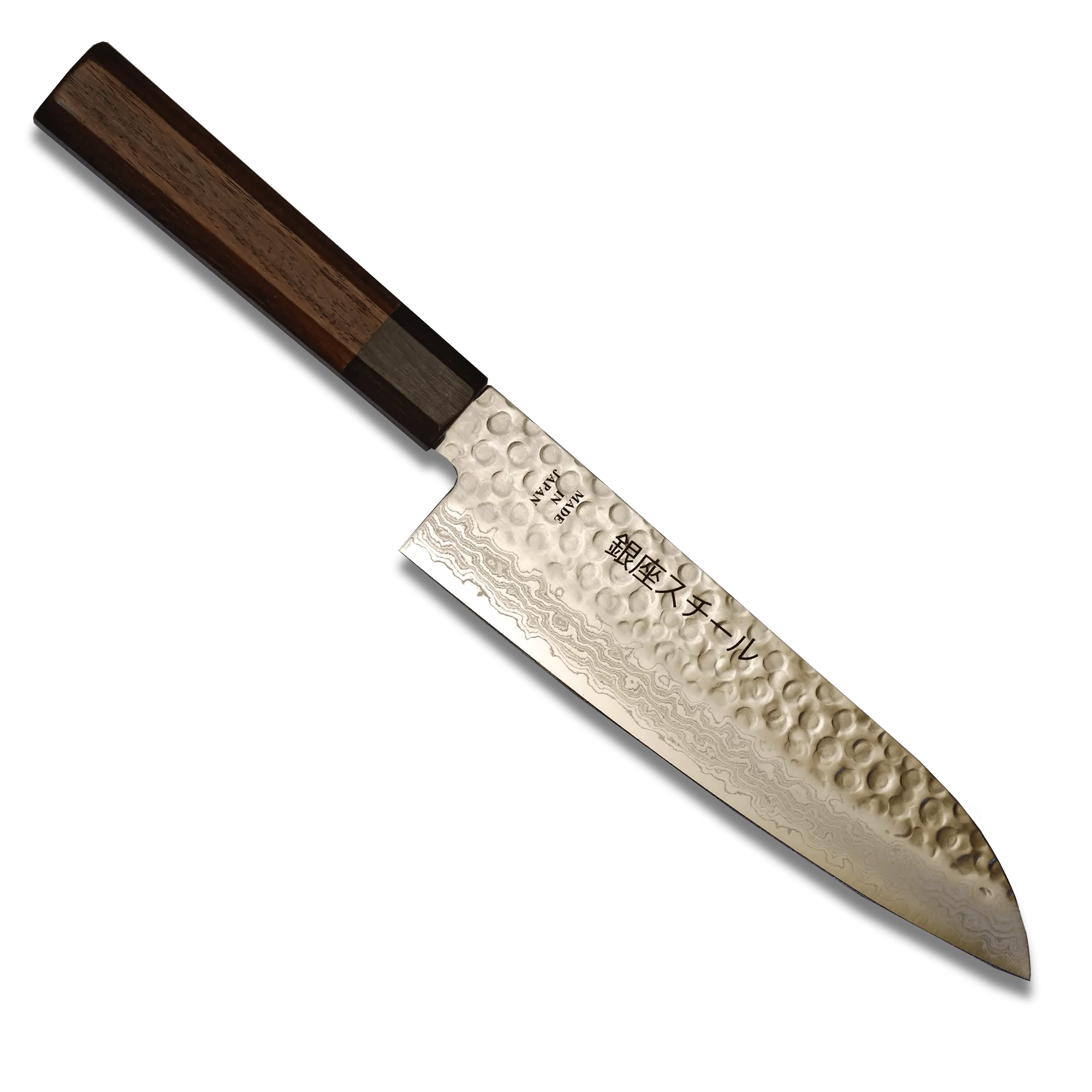
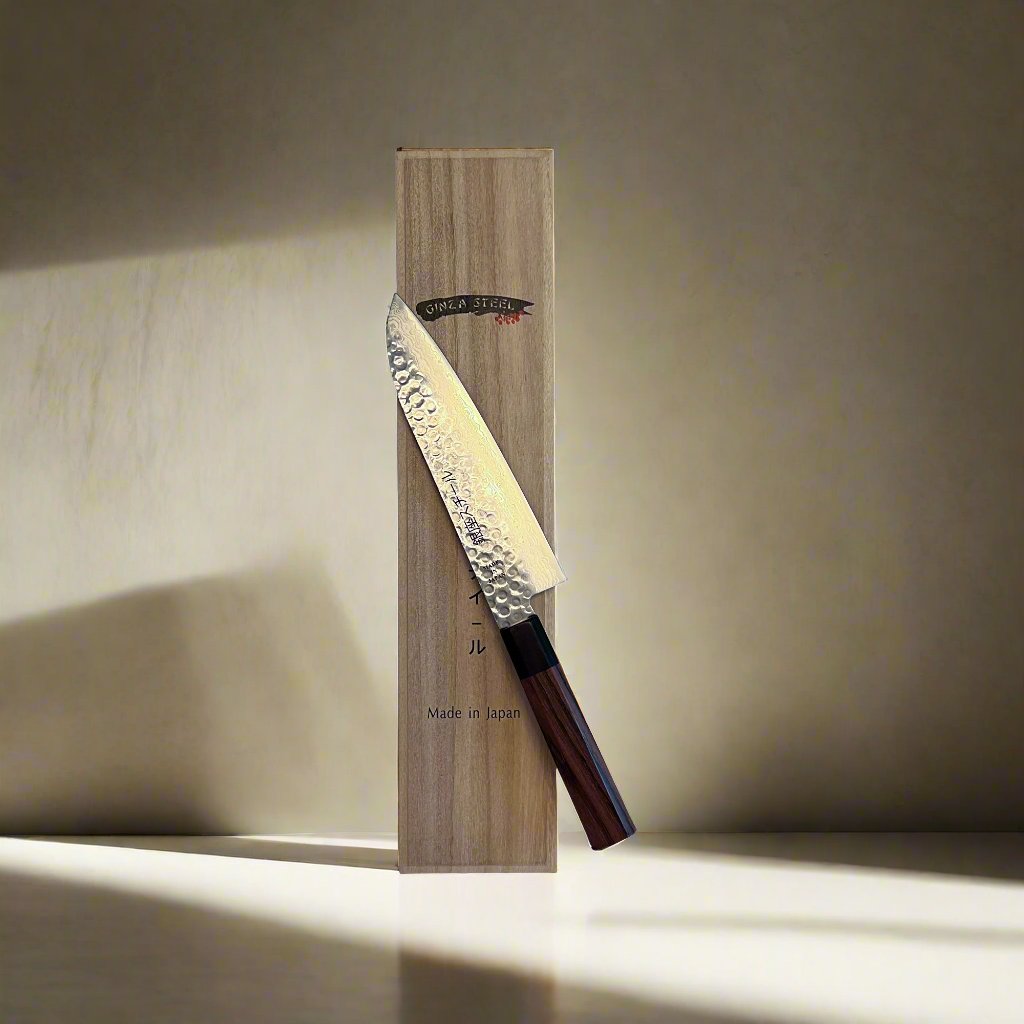
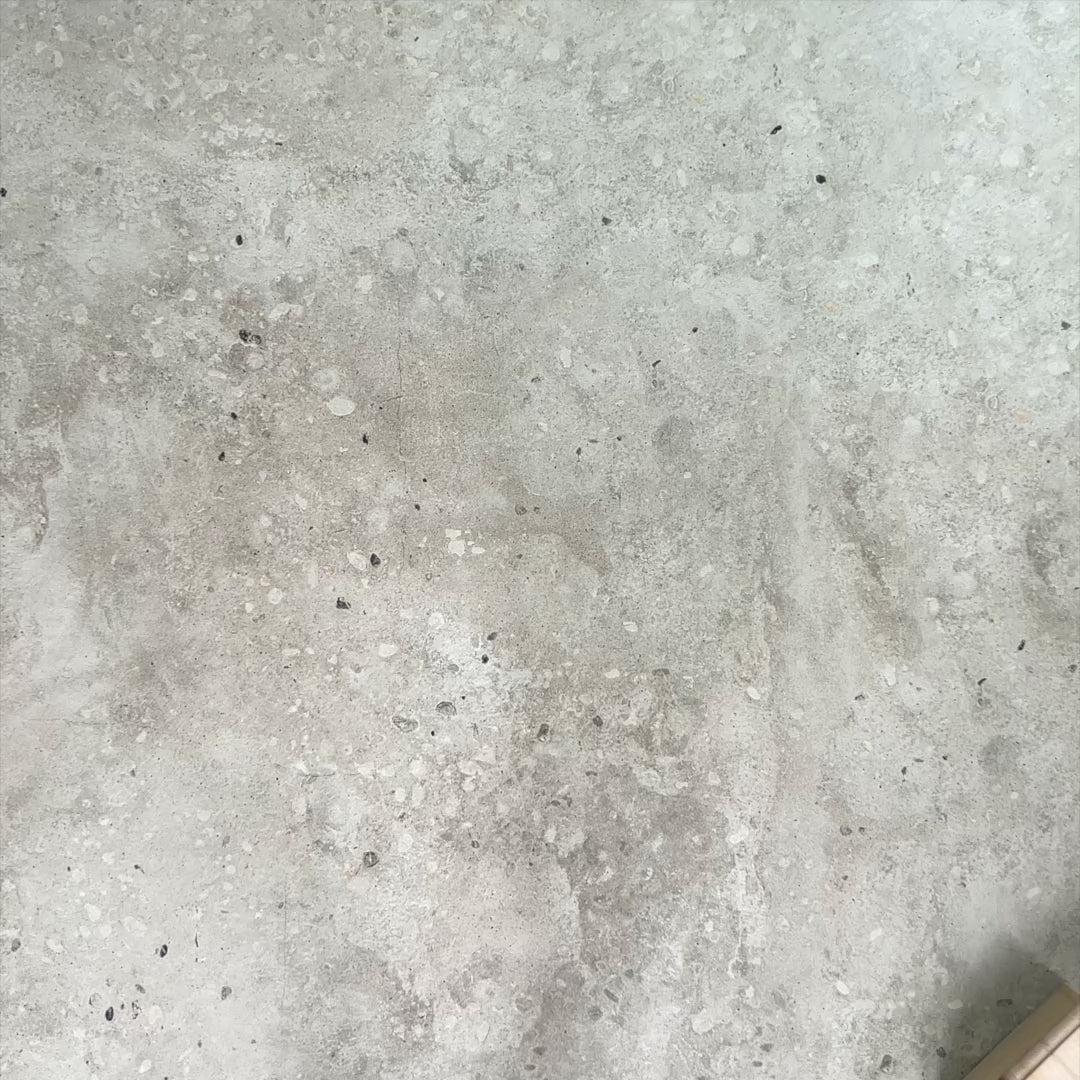
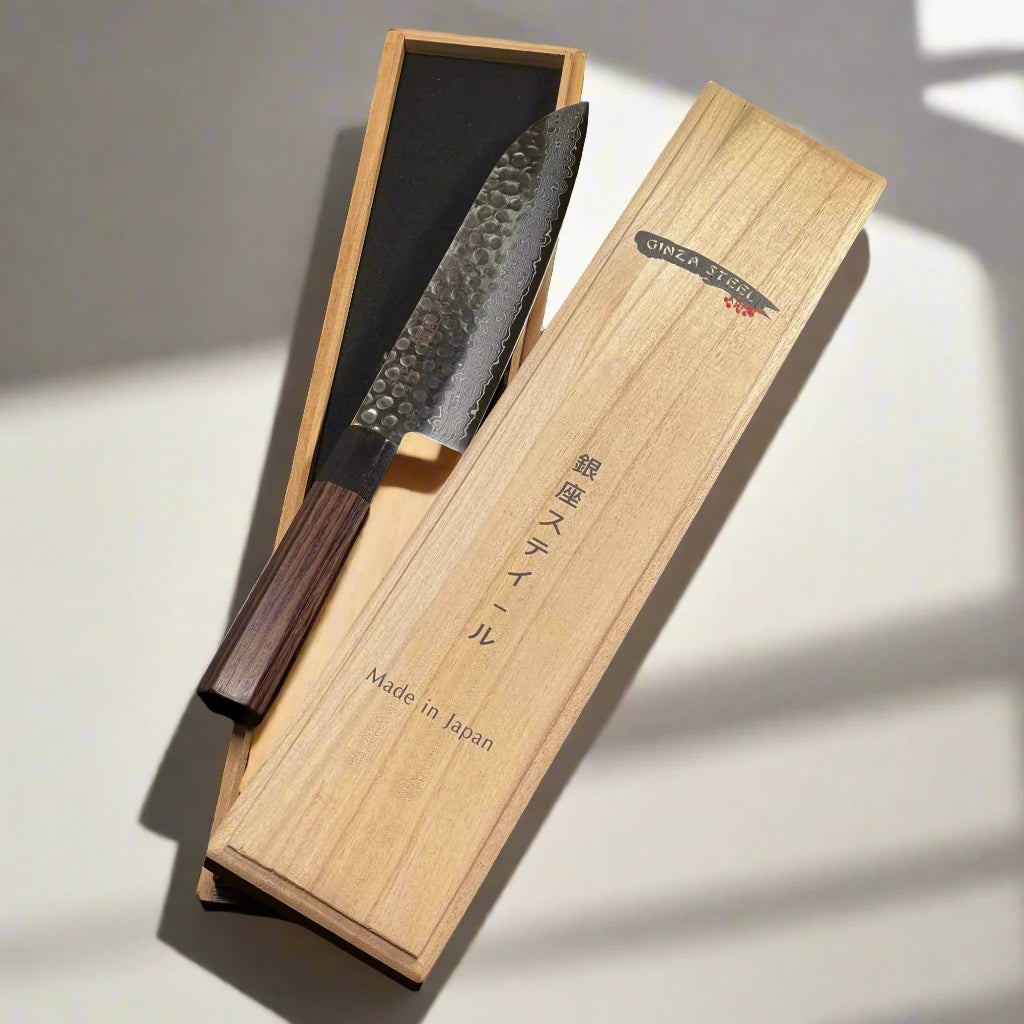
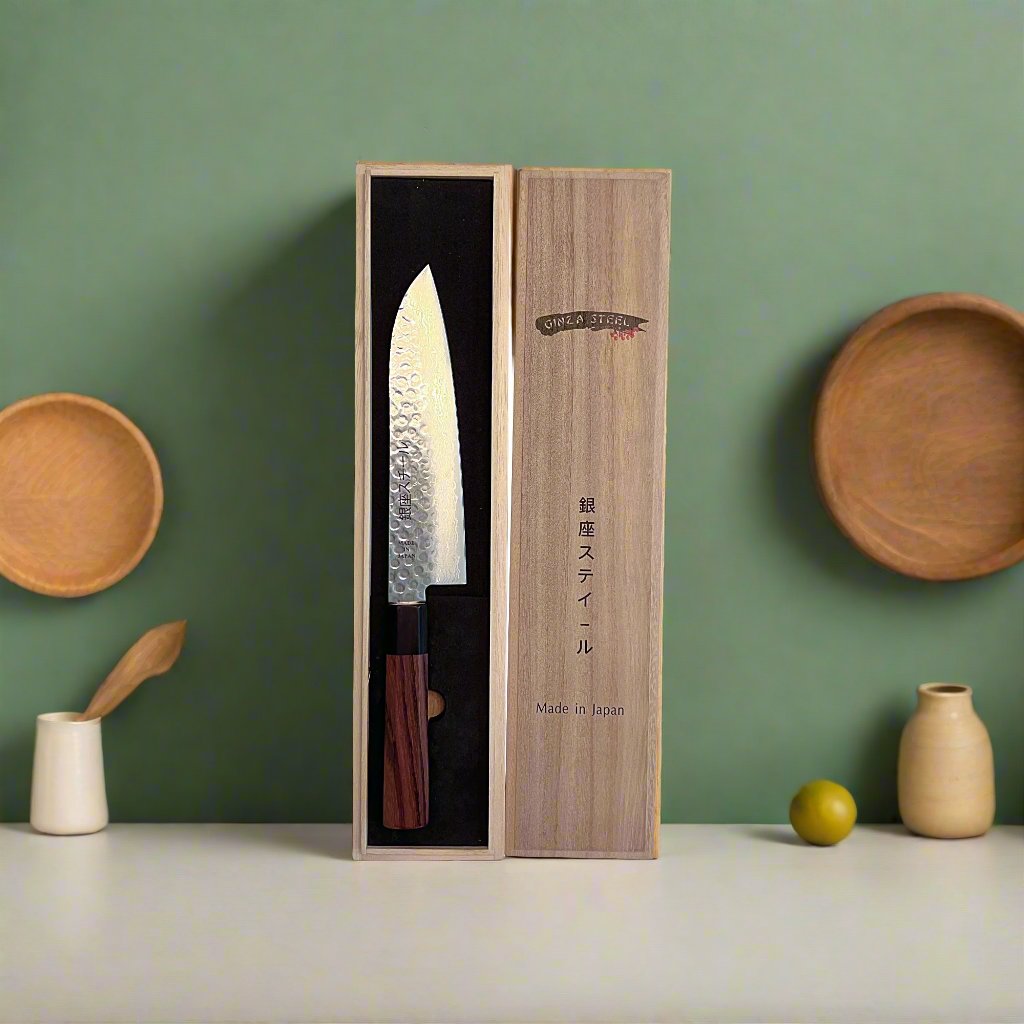
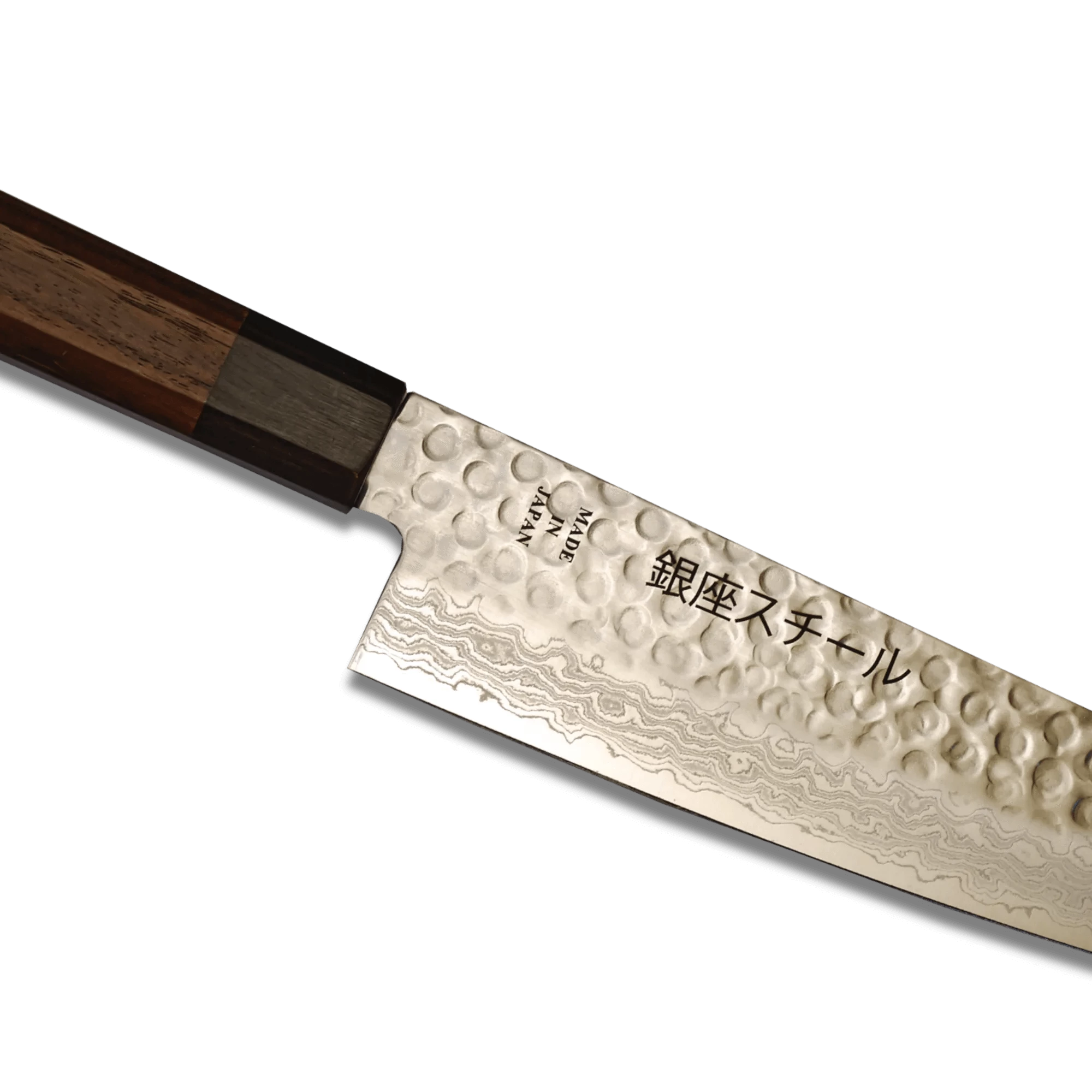
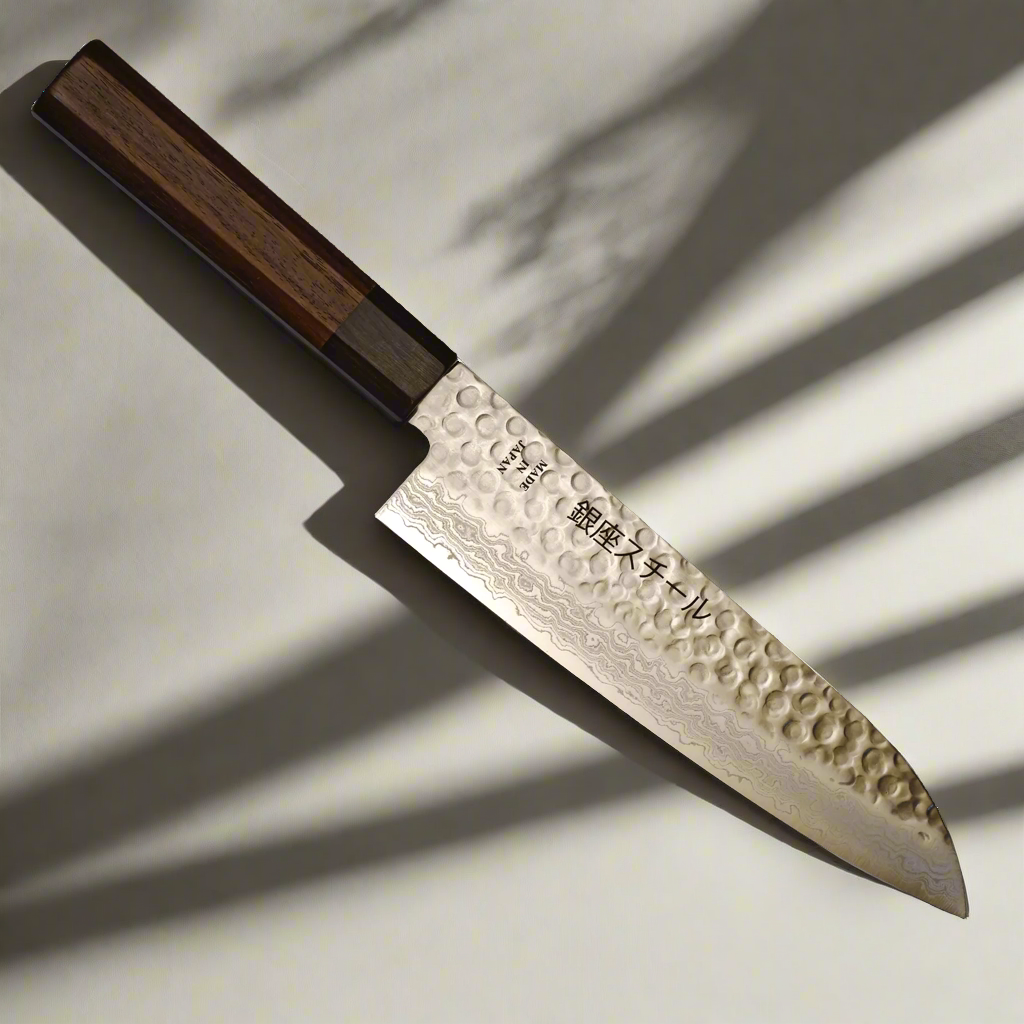
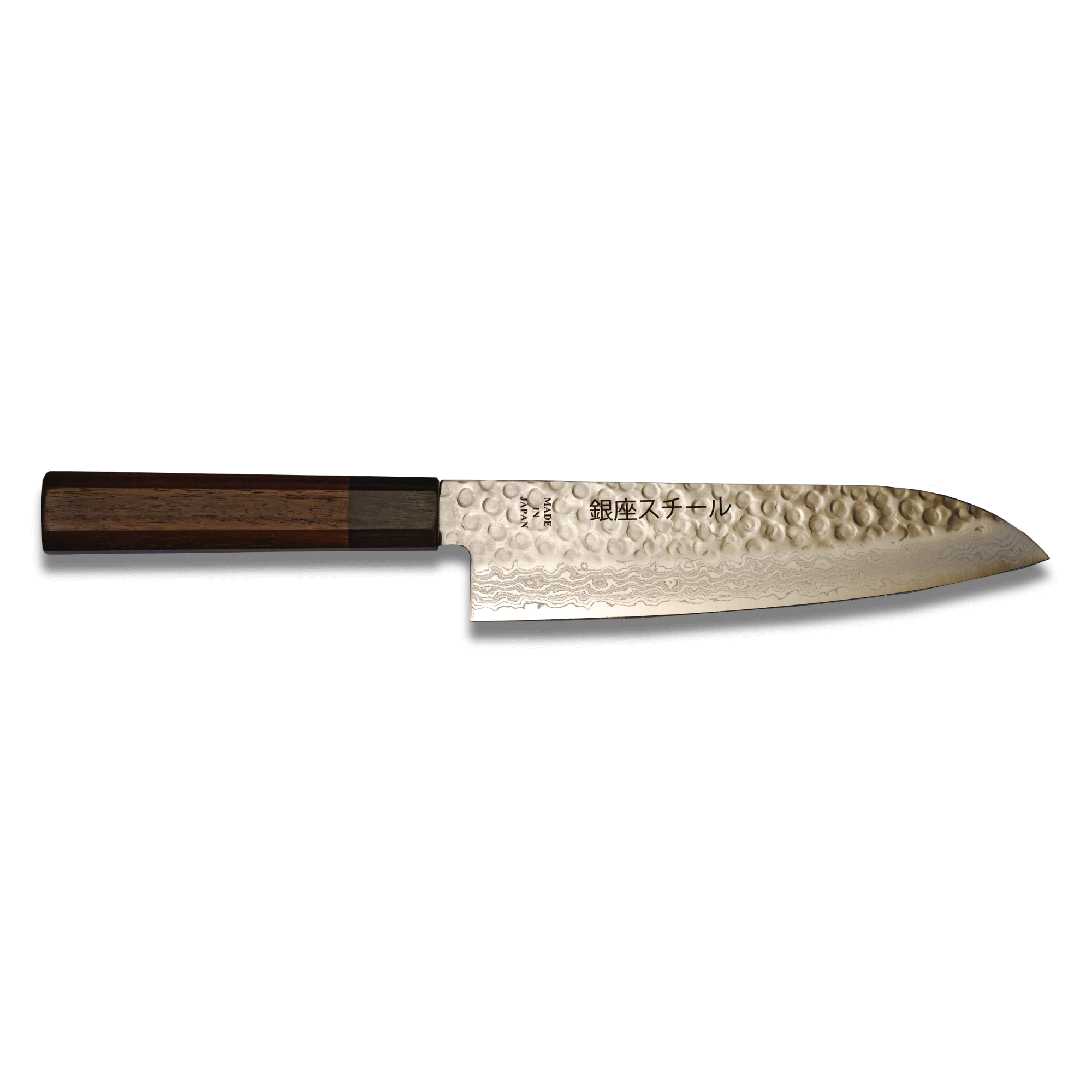

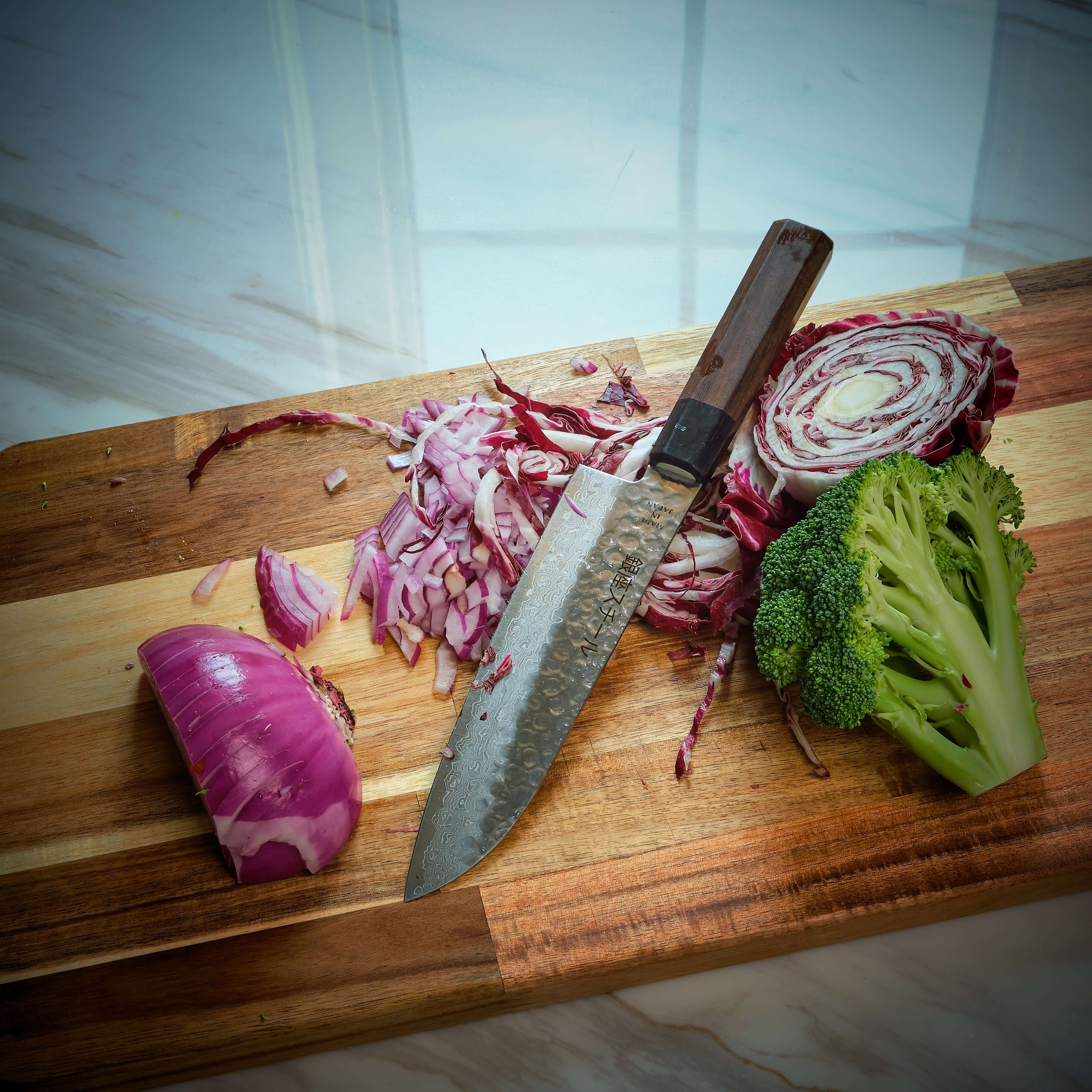
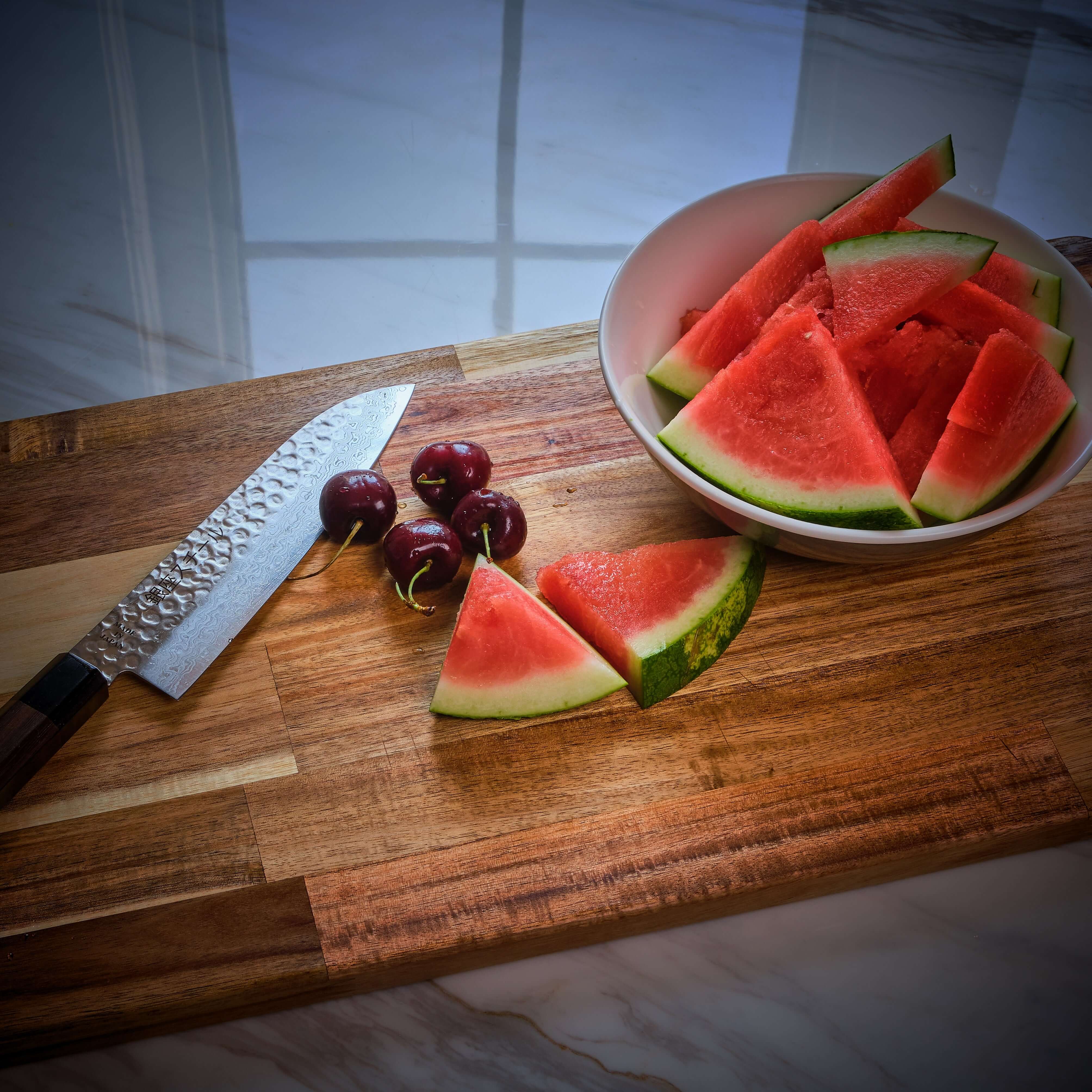
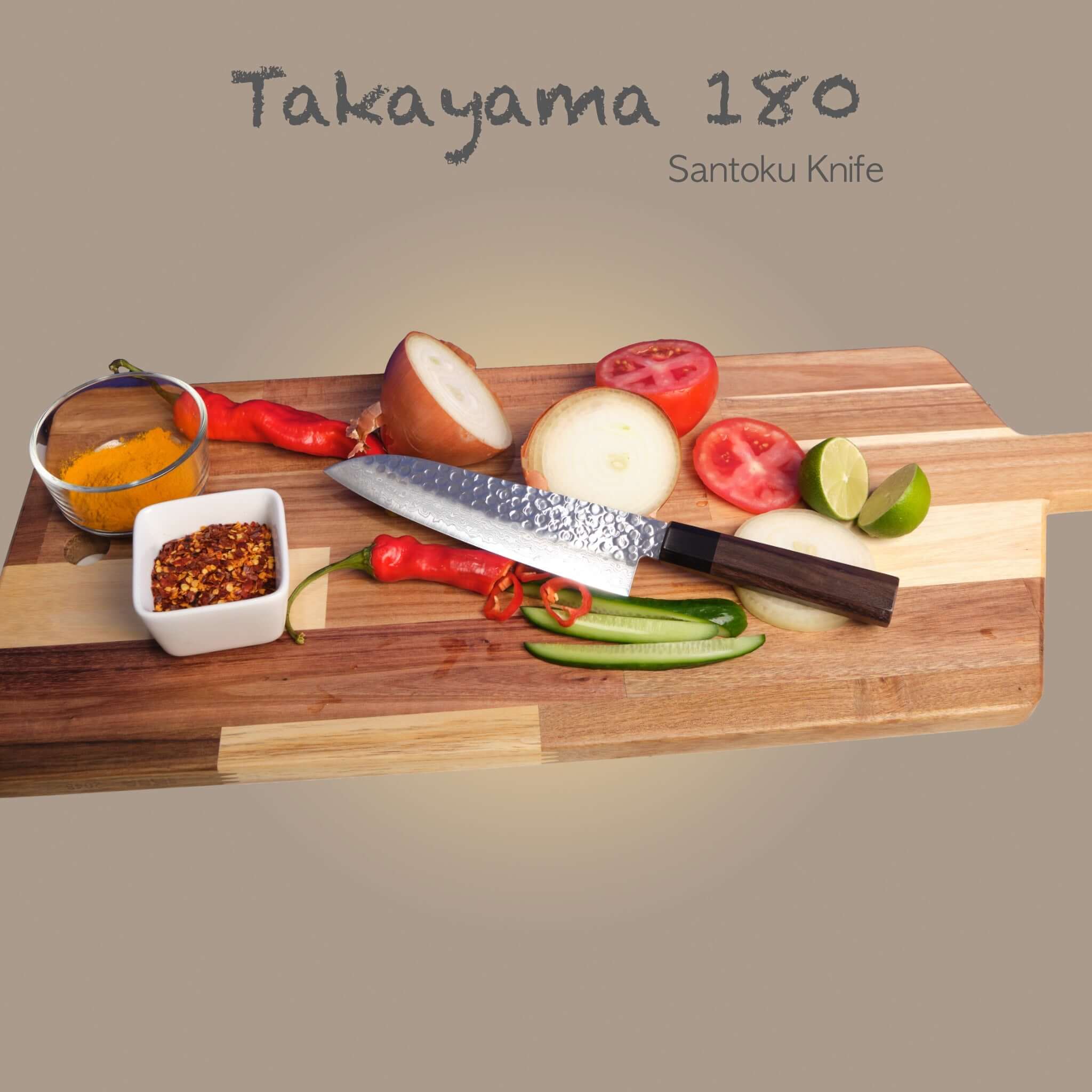

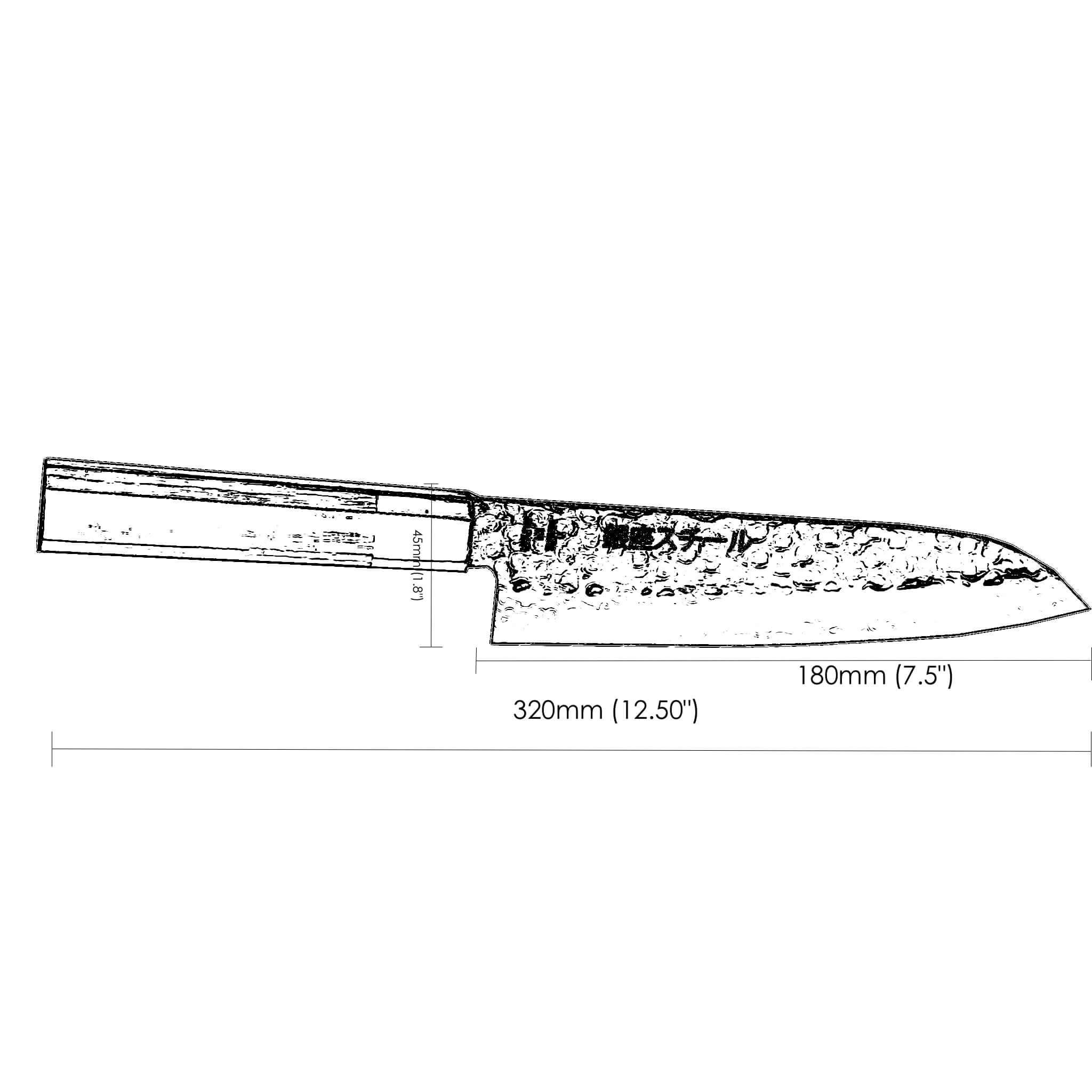
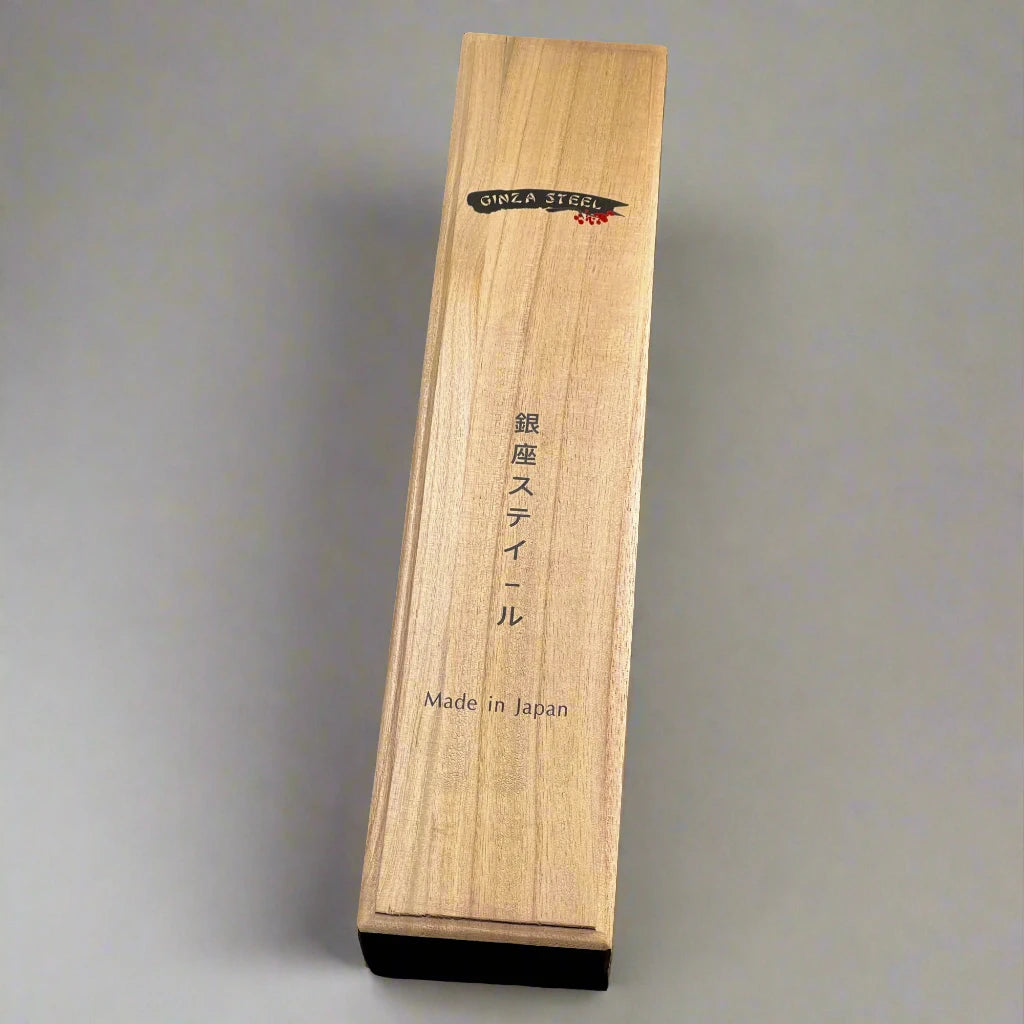
Takayama 180 - Santoku Knife 180mm Blade
Dishwasher Safe : No
$295.00CAD
🇯🇵 Ginza Steel Takayama 180 Santoku Knife
Introducing the Ginza Steel Takayama 180 Santoku Knife – a culinary masterpiece crafted in Japan. Elevate your kitchen experience with this precision-engineered blade, expertly forged from high-quality steel for unparalleled sharpness and durability. The 180mm Santoku design combines versatility and elegance, making it the perfect tool for slicing, dicing, and chopping with ease. The Ginza Steel Takayama 180 Santoku Knife is not just a kitchen essential; it's a testament to Japanese craftsmanship, bringing the art of culinary precision to your fingertips. Upgrade your cooking game with the epitome of Japanese knife excellence.
Blade Details:
- Blade Material: High Carbon Swedish Steel (19C27 by Sandvik)
- Blade Pattern: 45 Layer Damascus
- Blade Edge: Double Edge
- Blade Size: 180mm
Choose options















Takayama 180 - Santoku Knife 180mm Blade
Sale price$295.00 CAD















